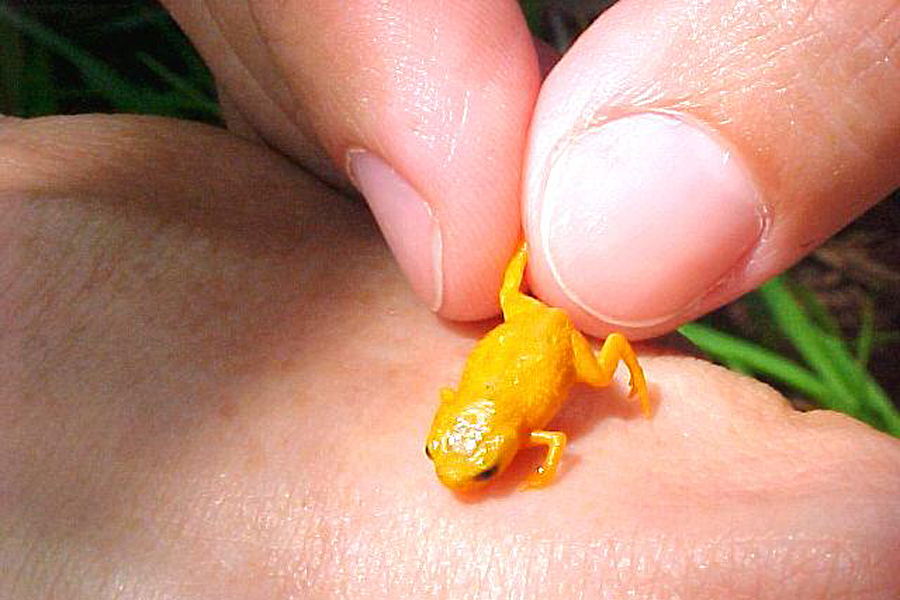Seven species of tiny frogs revealed: How small do frogs get?
How small do frogs get?
A group of researchers in Brazil have discovered species of frogs so small, each one can fit on your thumbnail.
After exploring the southern Brazilian Atlantic Rainforest for five years, a team of researchers has uncovered seven new frog species in the genus Brachycephalus known for their brightly colored, poisonous skin and miniscule size.
Fully grown, none are more than a centimeter long, about the size of an adult thumbnail, making them some of the smallest land-dwelling vertebrates known.
In fact, these frogs are so small their anatomy is optimized to their tiny scale. Most have three toes and two fingers, instead of the usual five toes and four fingers found on most frogs.
Of course, it wasn't easy finding them.
The researchers heard the frogs before they saw them, and followed the sounds of the singing frogs to find them.
"You can hear them singing and there's probably hundreds of them, but you simply can't catch them! Because once you get closer, just from the vibration in the ground, they keep silent for, say, 20 minutes or half an hour. And then you have to go through the leaf litter very carefully with your hands," Marcio Pie, a professor at the Federal University of Parana, said in a press statement.
So scientists delicately rifled through leaf litter with their bare hands to find the tiny amphibians, whose bright, jellybean-like colors are designed to warn predators of tetrodotoxin, a deadly neurotoxin, in the frogs' skin.
How did these frogs get so small? One explanation is a theory known as island dwarfism or insular dwarfism, which suggests that when animals colonize islands or other isolated areas, large species tend to get smaller over subsequent generations, possibly due to a more limited supply of food.
Of course, these frogs weren't found on islands but on isolated mountaintops that can act like islands.
Their mountaintop habitat is also key to their diversity. Each of the seven species of frogs researchers uncovered was found on a different mountaintop. Living in isolated mountaintop ecosystems, separated by valleys, they interbred until they evolved into a completely separate species from their neighboring frogs one mountaintop over, LiveScience explains.
"It's a really exciting experience, because we have a good expectation that each mountaintop will have a new species, but we don't know what it's going to look like," Mr. Pie said.
The coast near southern Brazil's Atlantic Rainforest is a fertile place for ecologists to explore, yielding more different species per square kilometer than the Amazon, according to Pie.
The discovery of these seven new species of Brachycephalus pushes the count of known species to 28.
And while very small, these new frogs may not be the world's smallest. Pea-sized frogs, Microhyla nepenthicola, were found in Borneo in 2010, and a frog from Papua New Guinea, Paedophryne amauensis, that measures about a third of an inch, may be the smallest.
All of these frogs face environmental threats.
As The Christian Science Monitor reported, "Amphibians are the most threatened group of animals in the world, with a third of them in danger of extinction. They provide important services to humans, such as controlling the populations of insects that spread disease and damage crops, and helping to maintain healthy freshwater systems."
Which is why scientists may go to great lengths to keep this incredible frog species alive, including captive breeding, as well as efforts to protect their habitat from from invasive plant and animal species, logging, and other threats.
The good news is that it's very likely there are more teeny-tiny frogs out there.
"There are many other locations where you tend to find a very similar climate and so probably the frogs are going to be there as well," Pie said. "We are very confident that we're going to find even more species."
The frog study was published June 4 in the journal PeerJ.






